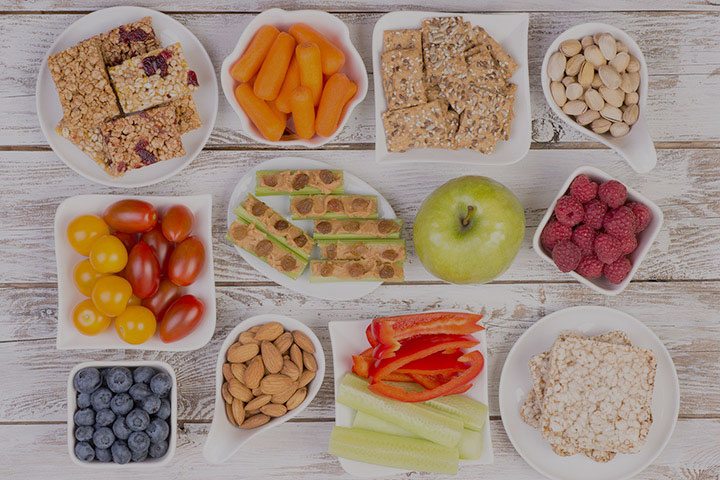By the time we reach our mid-forties — maybe even younger than that — we may think we have figured out the most nutritious, healthiest meal plan. We have lost weight. We are bursting with energy. We may have even read several how-to-eat-healthy books and healthy-eating magazines. After all, we think, I have cut out sugary treats, fatty meats, and all those high-calorie snack foods and gooey desserts. I don’t eat starchy fried foods anymore. And I drink plenty of fluids, eat unsaturated fats and oils, and have added loads of fresh fruits and vegetables (mainly organic!), whole grains, lean red meats, and seafood to my diet.
Yes, you may be in great shape, but how do you turn that around to help out an aging parent or a senior needing care? Can you translate all the good-eating choices to another? To make smart food choices for someone else means getting to know the person’s health stats, diet choices, and exercise regimens. Consider this: does that person have food allergies? Heart condition? Diabetes? Constipation? Are there strong food likes and dislikes, or even obligatory religious or cultural traditions? Are there any medical or drug-related issues that certain foods could trigger negative reactions? Is this person a breakfast junkie eating only sweet, gooey pastries? A snack-food addict? Binge soda pop drinker? Does this person demand giant portions, or skimp on or skip meals altogether?
With clear information, you can outline a healthy-eating, well-rounded menu plan. And if you need to talk dietary good sense, discuss the plusses of healthy eating, from lowering blood pressure, reducing the risk of Type 2 diabetes and heart attacks to helping to prevent bone loss. If your care recipient still needs further information, order this free copy of What’s on Your Plate? Smart Food Choices for Healthy Aging, compiled by the National Institute on Aging.
As you head to market with your shopping list, be ready to pick out a varied diet that includes generous amounts of fruits, vegetables, and legumes; whole grains; and protein-rich foods such as seafood, lean meats, eggs, and assorted milk-based products, including kefir, yogurt, and cheeses. That way all needed nutrients can be packed into the daily meals you cook. (Remember, even though organically raised foods might be preferable, not every grocery store sources them, and generally, organic products are costlier than others.)
Sensible breakfasts
Start with a tempting and health-boosting breakfast. The day’s first meal will rev up the body’s engine and ready it for the day’s activities. Instead of sweet pastries, offer whole grain cereals with fruit, an occasional wholewheat waffle or stack of pancakes, and yogurt or soymilk smoothies or kefir drinks. And several times a week, plan to serve fried, poached, or scrambled eggs. According to an abstract entitled “Protein and Older Adults” by R. Chernoff published in 2004 in the Journal of the American College of Nutrition, seniors require extra levels of daily protein, and eggs are an excellent source (plus eggs are easy to prepare). If high cholesterol is an issue for a senior, however, serve egg whites instead of whole eggs.
Midday Meals
Lunch is an ideal time to offer a main meal of the day, from robust salads with a composite of mixed greens, diced fresh veggies, maybe even some cold pasta, and proteins, such as sliced steak, sliced hardboiled eggs, or crumbled canned tuna. Depending on the weather, even a bowl of steamy chowder, turkey chili, or a thick vegetable-meat stew with a side of grilled cheese makes an ideal midday meal.
You can also introduce some ethnic fare, from meat-and-vegetable-filled tacos or burritos, to a simple Chinese stir-fry over brown rice, to a chicken pita sandwich with lettuce and a yogurt dressing, or to a bowl of pasta topped with meatballs or chunks of flavorful chicken. And you can consider some all-time American favorites, such as a hamburger made with lean beef or turkey on a whole-wheat bun to a roast beef-based club sandwich.
Dinnertime
By day’s end, a senior’s meal can be simple and tailored to a healthful selection of protein, limited starches, and vegetables. Poached or broiled salmon or tuna steaks with a baked potato (but watch those toppings); lamb or beef steaks with brown rice; or even a hearty chicken salad can satisfy cravings and nutritional needs. And each main-course protein should be paired with freshly cooked or raw vegetables or a small tossed salad with flavorful dressing.
Desserts and Snacks
Everyone has a sweet tooth, but rich buttery desserts are not ideal for seniors unless they exercise heartily every day. Sure an occasional scoop of ice cream or wedge of apple pie can work well in a meal plan, but satisfy sweet cravings with fresh seasonal fruits. Turn off between-meal hunger with an offering of nuts, popcorn, cubes of cheese, salsa with tortilla chips, or a scoop of hummus with some whole-wheat crackers.
(This article has been reviewed July 2024 since it originally published in May 2017.)
